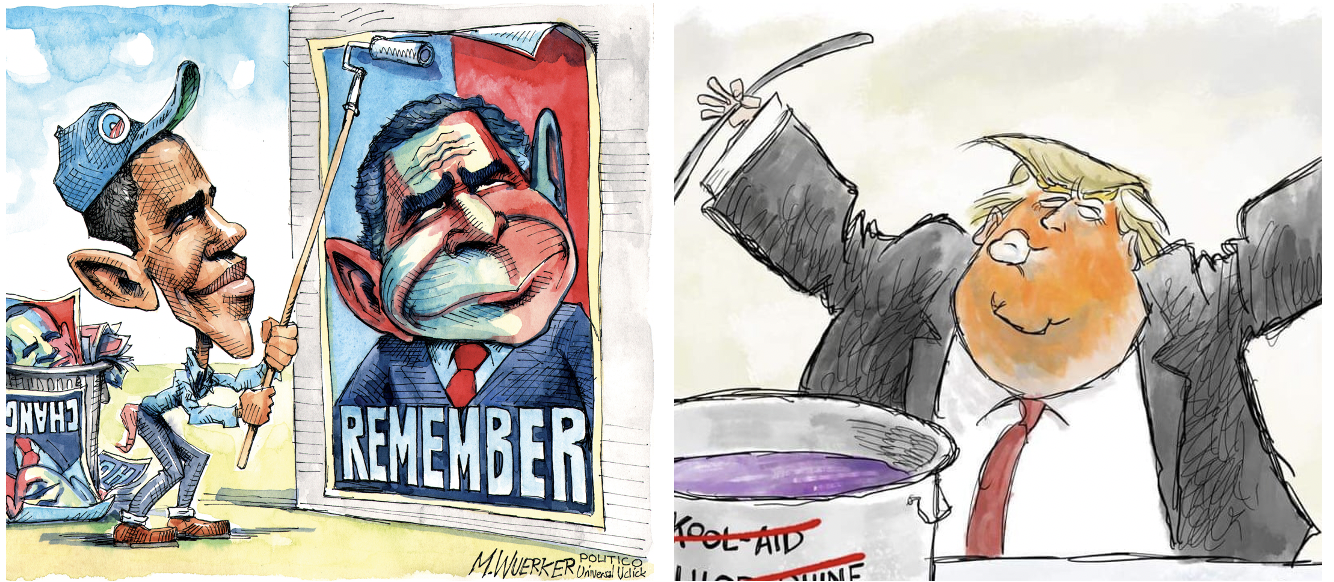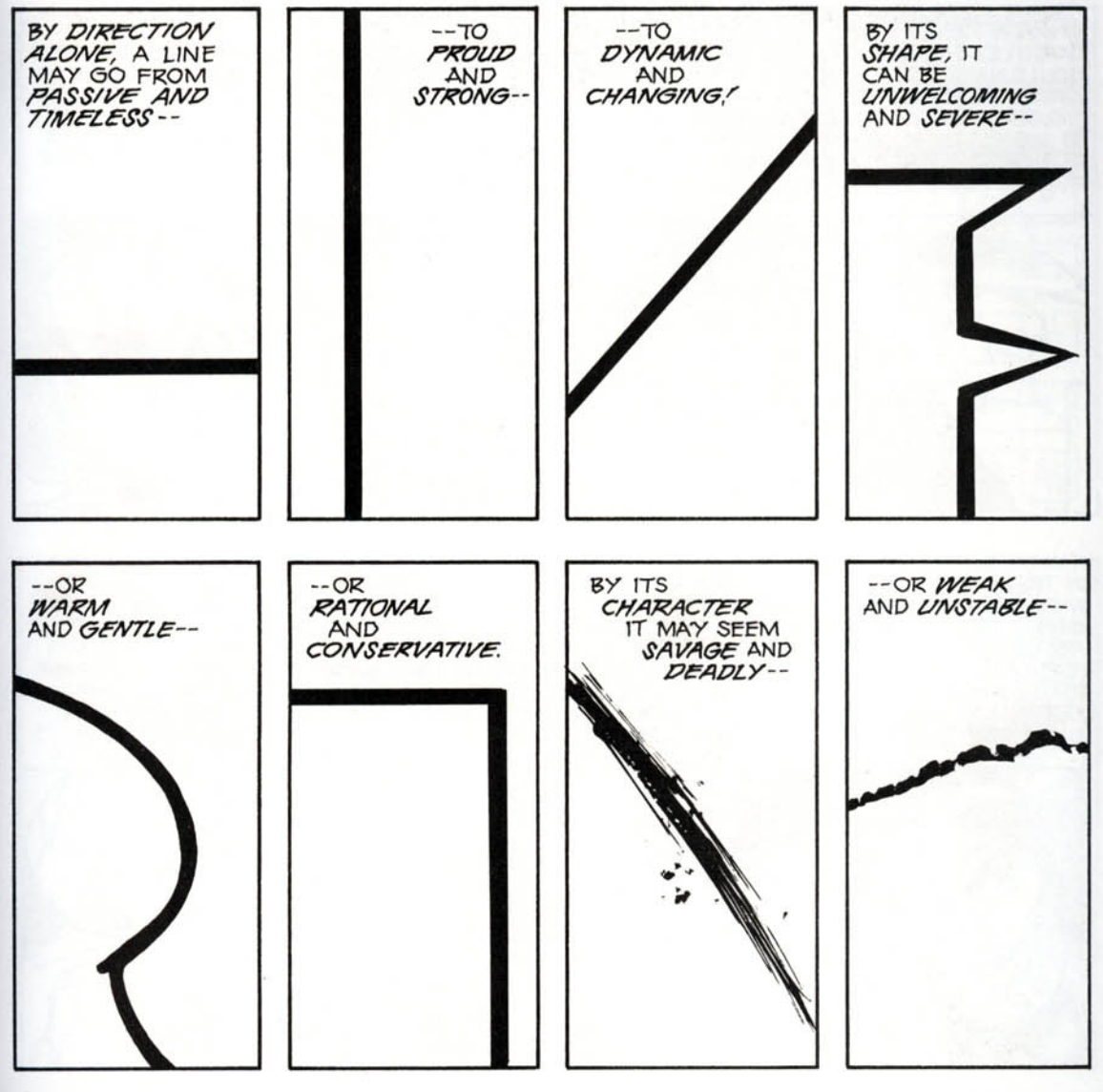A Closer Lens into Comics
Chapter 2:
In section 2, McCloud examines the vocabulary of comics and the universal characteristics/influence that comics have on humanity. He poses a powerful question in that, “why is our culture so in thrall to the simplified reality of a cartoon?” From young children to adults, comics have truly integrated into all aspects of society. Notably, he points out the somewhat ironic nature of cartooning as a form of amplification through simplification. For example, this is seen prominently in political cartoons – ie. President Obama is constantly depicted with exaggerated-sized ears and Trump with a plump orange face/distinctive hairline. In doing so, this supports his notion that when we abstract an image, we’re not so much eliminating details as we are honing in on specific details.

Chapter 5:
In Chapter 5, Living in Line, McCloud discusses the myriad ways by which comic artists play on the readers’ emotions. One area in particular that captivated me was the differing usage of lines to convey a specific moods. For example, cartoons such as Donald Duck often use gentle curves to express childhood innocence and whimsies. This is especially meaningful in conjunction with Dondis’ discussion of lines, where seemingly inanimate strokes can communicate strikingly human emotions. These further hint at the “invisible” and often subconscious mechanisms by which cartoons can exert influence on our understanding.
